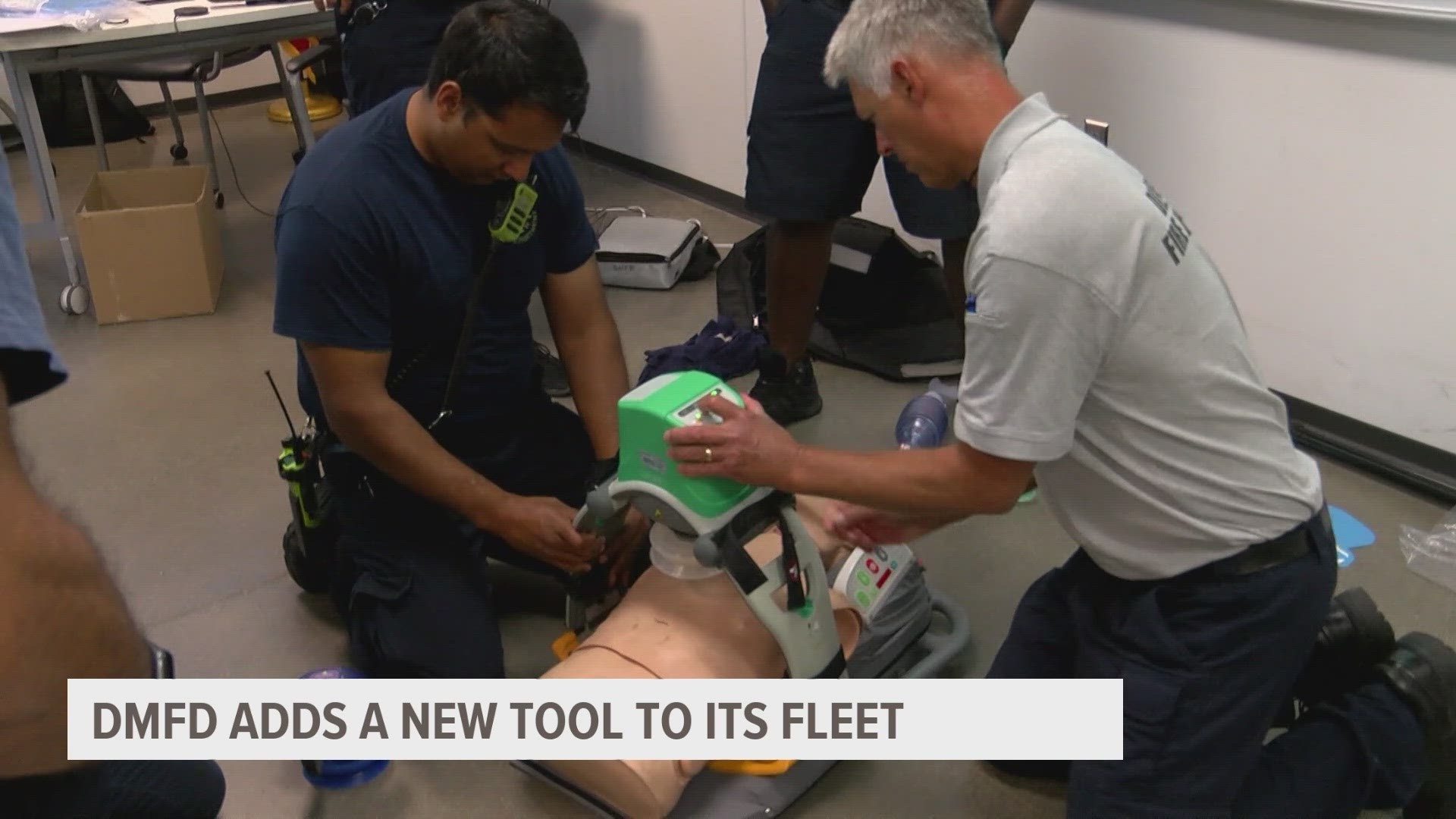DES MOINES, Iowa — The Des Moines Fire Department is rolling out the last piece of equipment in its cardiac arrest initiative.
"Should people visit or live in the city of Des Moines, they can feel safe that Des Moines Fire Department is on the cutting edge of cardiac arrest management," said EMS Captain Tony Sposeto.
The EleGARD is a device which slowly lifts a patient's head during a cardiac arrest. First responders say this takes pressure off the person's brain, allowing a better circulation of blood as crews deliver CPR.
"Many of the people who do survive sudden cardiac arrest, they end up with with brain injury," said Kurt Bramer, director of Clinical Educational Training with Advanced CPR Solutions. "No different than we see with trauma post head injury, traumatic brain injury, concussion or from car accidents and football tackles and sports."
"They may be alive, but they're brain dead," Sposeto said. "So they don't have any neural capacity. So what this piece of the puzzle does for us is gives us a better chance at perfusing, or getting good, fresh oxygenated blood into the brain."
While the device is easy to use, trainers say it takes practice to incorporate it into an already well-oiled machine.
"The challenge is that the medical community has been doing resuscitation the same way for six or more decades," Bramer said. "So we have very deep seated habits, and understandings of what we think is best for patients in breaking those habits and learning a new sequence and learning how to implement a different set of priorities."
The EleGARD will work in tandem with a manual CPR pump and the LUCAS device, which delivers automatic chest compressions. First responders say this trio of tools is a gamechanger in saving lives.
"We're seeing a increased likelihood of survival that is anywhere from two to five times greater than what the national standard has been," Bramer said.
"Our goal with this is to save as many lives as we can and allow those patients to be able to walk out of the hospital after these events back to their families and live normal lives," Sposeto said.
While these devices are a major breakthrough, first responders say they need your help: Chest compression-only CPR before ambulances arrive on scene could be the difference between life or death.
To learn how to administer CPR, watch the video below.

